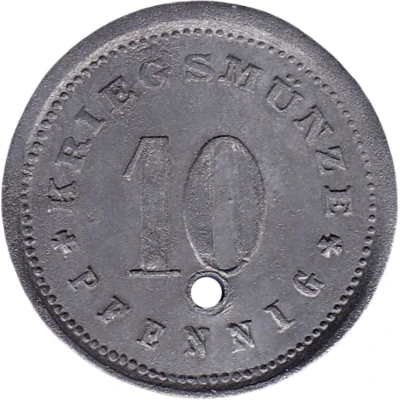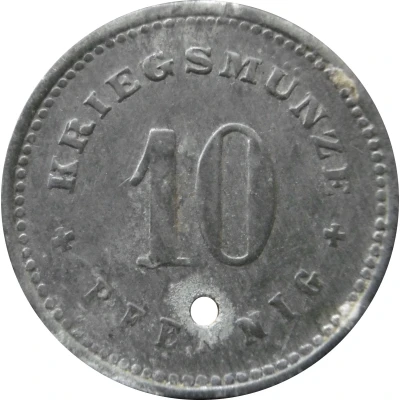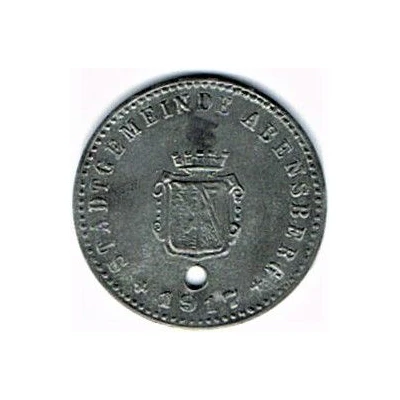


© gyoschak (CC BY-NC-SA)
10 Pfennigs - Abensberg
1917 year| Zinc | 2.1 g | 21.8 mm |
| Issuer | City of Abensberg (Federal state of Bavaria) |
|---|---|
| Emperor | William II (Wilhelm II) (1888-1918) |
| Type | Standard circulation coin |
| Year | 1917 |
| Value | 10 Pfennigs (10 Pfennige) (0.10) |
| Currency | Mark (1914-1924) |
| Composition | Zinc |
| Weight | 2.1 g |
| Diameter | 21.8 mm |
| Thickness | 1.2 mm |
| Shape | Round with a round hole |
| Technique | Milled |
| Orientation | Medal alignment ↑↑ |
| Demonetized | Yes |
| Updated | 2024-10-04 |
| Numista | N#312292 |
|---|---|
| Rarity index | 92% |
Reverse
Beaded rim, legend surrounding denomination centered
Script: Latin
Lettering:
KRIEGSMÜNZE
10
✚ PFENNIG ✚
Edge
Reeded
Interesting fact
The 10 Pfennigs - Abensberg 1917 coin from the City of Abensberg in Bavaria, Germany, features a unique design on its reverse side. Instead of the usual national emblem or coat of arms, the coin features a depiction of a locally famous landmark, the Abensberg Castle. This medieval fortress was built in the 13th century and has been well-preserved, making it a popular tourist attraction in the region. The inclusion of this local landmark on the coin adds a touch of regional identity and pride to the design, making it stand out from other coins in circulation.



